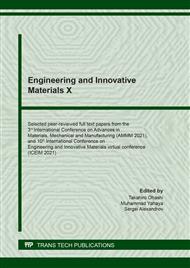p.35
p.41
p.49
p.57
p.67
p.73
p.83
p.97
p.109
Influence of Heat Treatment on Microstructure and Performance of Degradable Mg Matrix Composites Reinforced with Hollow Glass Microsphere
Abstract:
Recently degradable Mg matrix composites as a promising candidate for degradable downhole tools application have aroused extensive interest. In the present work, the effects of heat treatment (solution treatment and artificial aging) on the microstructure, mechanical properties and degradation behaviors of the newly developed hollow glass microsphere reinforced Mg-Al15-Zn6-Cu1.5 composites were investigated. The results show that the solution treatment causes the β-Mg17Al12 phase and Mg32(Al,Zn)49 phase to dissolve into the α-Mg matrix and the coarse eutectic τ-Al2CuMg phase to translate into blocky morphology. Aging treatment causes the β phase to precipitate at the grain boundaries or the edge of the residual second phases in lamellar and blocky morphology. After solution treatment, the ductility of the composites was significantly increased, while the following aging treatment could significantly increase the ultimate compressive strength (UCS), hardness and degradation rate. The composites solution treated at 420 °C for 20 h and aged at 200 °C for 24 h shows the higher degradation rate of 6.5 mg·cm-2·h-1 in 3 wt.% KCl at ambient temperature, with UCS of 471 MPa, Brinell hardness of 115 HB and fracture strain of 8.7 %, this outstanding comprehensive performance is more suitable for degradable downhole tools application.
Info:
Periodical:
Pages:
67-72
Citation:
Online since:
April 2022
Authors:
Price:
Сopyright:
© 2022 Trans Tech Publications Ltd. All Rights Reserved
Share:
Citation:


